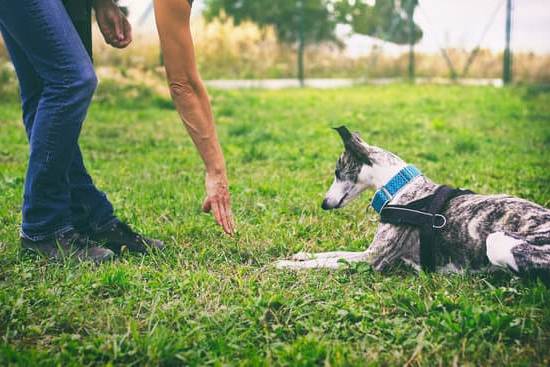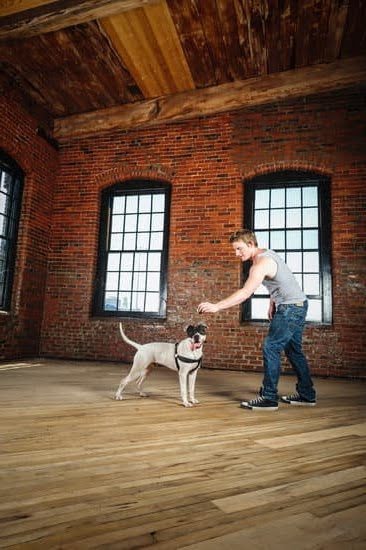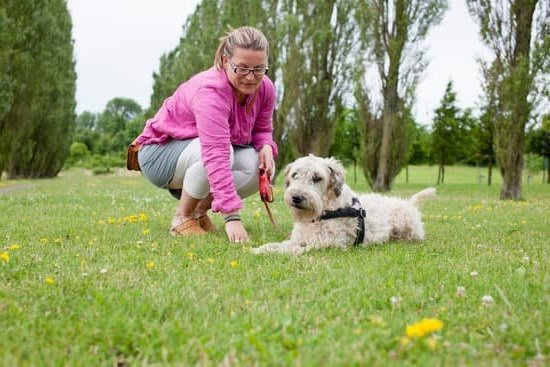Are dogs trained to look cute? This question has sparked a great deal of interest and debate among dog lovers, behaviorists, and experts in the field. The fascination with cute dogs is undeniable, as these furry companions often melt hearts with their adorable looks and charming behaviors. In this article, we will explore the factors that contribute to a dog’s cuteness, including genetics, selective breeding, training, and socialization.
The science behind cuteness is a fascinating subject that delves into the genetic and evolutionary reasons why certain traits make dogs appear irresistibly cute to humans. Furthermore, the role of selective breeding in creating specific dog breeds with appealing characteristics cannot be overlooked. As such, understanding the interplay of genetics and breeding practices is crucial in unraveling the mystery behind a dog’s adorable appearance.
In addition to genetic and breeding factors, the influence of training and socialization on a dog’s behavior and appearance is significant. Positive reinforcement plays a pivotal role in shaping a dog’s cute behavior, making it essential to consider how training methods can impact a dog’s cuteness. Moreover, this raises questions about the controversial practice of training dogs to look cute and the ethical considerations surrounding it.
The Science Behind Cuteness
Cuteness in dogs is not just a random phenomenon, but it has deep roots in genetic and evolutionary factors. Some of the key elements that contribute to a dog’s cuteness include facial features, body proportions, and behaviors that elicit positive emotions from humans. From a genetic perspective, certain traits like large, expressive eyes or a small nose contribute to what humans perceive as cute. These features trigger nurturing instincts, which can be traced back to our evolutionary history.
Furthermore, the concept of neoteny, or the retention of juvenile traits into adulthood, plays a crucial role in creating cuteness. Dogs with characteristics such as floppy ears or a playful demeanor exhibit neotenous traits that are inherently appealing to humans. This is linked to how domestication has led to the development of dog breeds with these specific features, making them more endearing to people.
In addition to genetics and evolution, cultural influences also play a part in shaping our perception of cute dogs. Through socialization and exposure to certain images and media representations, individuals develop preferences for specific breeds or physical attributes that align with their cultural ideals of cuteness. This further emphasizes the complex interplay between biology and environment in determining what we find adorable in dogs.
- Genetic factors contributing to cuteness
- Facial features
- Body proportions
- Behaviors eliciting positive emotions
- Evolutionary role
- Neoteny and retention of juvenile traits
- Domestication’s impact on breed development
- Cultural influences on perceptions of cuteness
- Socialization and exposure to media representations
- Preferences for specific breeds or physical attributes
The Role of Selective Breeding in Creating Cute Dog Breeds
Selective breeding has played a significant role in creating the adorable and visually appealing dog breeds that we know today. Over generations, humans have selectively bred dogs for specific traits such as size, coat color, facial features, and overall appearance to enhance their cuteness. This intentional breeding process has led to the creation of breeds such as the Pomeranian, Corgi, Shih Tzu, and many others known for their irresistibly cute looks.
The concept of selective breeding involves choosing dogs with desirable traits and pairing them to produce offspring with those same traits. For example, breeders may select dogs with rounder faces, larger eyes, and fluffy coats to create breeds that are perceived as cute and endearing. Through careful breeding practices, specific physical attributes have been perpetuated throughout various dog breeds, contributing to their distinct cuteness.
While selective breeding has undeniably contributed to the creation of cute dog breeds, it has also raised ethical concerns regarding the potential health issues associated with exaggerated features. Breeding for extreme cuteness can sometimes result in genetic predispositions to certain health problems such as respiratory issues or joint abnormalities. As a result, it is important for breeders to prioritize the overall well-being of the dogs when selecting for specific aesthetic traits.
The Influence of Training and Socialization on a Dog’s Behavior and Appearance
Dogs are not only beloved for their loyalty and companionship, but also for their endearing and adorable appearance. The influence of training and socialization plays a significant role in shaping a dog’s behavior and overall appearance, including their “cuteness.” The environment in which a dog is raised, the interactions they have with humans and other animals, and the training methods used all contribute to how a dog presents itself.
Socialization, which involves exposing a dog to various experiences, people, and environments from an early age, plays a crucial role in shaping their behavior. Positive socialization experiences can result in a well-adjusted and friendly demeanor, while negative or limited socialization can lead to fearfulness or aggression. Moreover, the training methods employed by dog owners or professional trainers can influence not only a dog’s behavior but also its appearance.
Positive reinforcement training techniques have been found to be effective in shaping desirable behaviors in dogs. This method involves rewarding good behavior with treats or praise, thereby encouraging the dog to repeat those behaviors. When applied consistently, positive reinforcement can lead to dogs displaying affectionate, playful, and “cute” behaviors that are often sought after by pet owners.
| Aspect | Description |
|---|---|
| Socialization | Involves exposing a dog to various experiences, people, environments from an early age. |
| Positive reinforcement training techniques | It involves rewarding good behavior with treats or praise. |
The Power of Positive Reinforcement in Shaping a Dog’s Cute Behavior
Positive reinforcement plays a crucial role in shaping a dog’s behavior, including what many perceive as “cute” traits. When dogs exhibit behaviors that are considered adorable, such as wagging their tails, giving puppy eyes, or performing tricks, they are often met with positive responses from their owners. This positive feedback can encourage the dog to continue displaying these behaviors, leading to the perception of them being “cute”.
Using positive reinforcement techniques during training sessions can also contribute to the development of endearing behavior in dogs. By rewarding a dog with treats, praise, or affection when they exhibit certain actions or responses, owners can reinforce those behaviors and encourage the dog to repeat them. For example, if a puppy is rewarded with treats and attention every time it tilts its head in curiosity, it is likely to continue doing so as it grows older.
Additionally, positive reinforcement can help strengthen the bond between an owner and their dog. When the dog receives praise and rewards for behaving in a certain way, it builds trust and fosters a positive relationship. This can result in the dog being more eager to please and display behaviors that are perceived as cute by their owners and others around them.
- Positive reinforcement encourages dogs to exhibit cute behaviors
- Rewards such as treats and affection reinforce endearing actions
- Strengthens the bond between owner and dog
The Controversy Surrounding the Training of Dogs to Look Cute
The debate surrounding the training of dogs to look cute is a complex and multi-faceted issue. While some argue that certain breeds are naturally inclined to exhibit endearing features, others contend that selective breeding and deliberate training practices play a significant role in shaping a dog’s appearance and behavior.
One aspect of this controversy revolves around the concept of ethical treatment of animals. Critics argue that breeding and training dogs for cuteness can lead to physical and behavioral traits that may compromise the well-being of the animal.
For example, some breeds are intentionally bred for their flattened faces, which can result in respiratory issues and other health problems. Additionally, the emphasis on cuteness in dog training may prioritize superficial characteristics over the overall health and happiness of the animal.
Furthermore, the controversy extends to concerns about perpetuating unrealistic standards for certain dog breeds. As social media and popular culture continue to highlight adorable or “Instagram-worthy” dogs, there is mounting pressure on breeders and owners to conform to these idealized standards of cuteness. This can perpetuate unhealthy trends in dog breeding and encourage unrealistic expectations for pet owners.
| Aspect | Impact |
|---|---|
| Ethical Treatment of Animals | Potential compromise in well-being due to selective breeding for cuteness. |
| Unrealistic Standards | Pressure on breeders and owners to conform to idealized standards leads unhealthy trends. |
Debunking Myths
Are Cute Traits Innate or Learned?
One common misconception is that all dogs are trained to be cute. While it’s true that training and socialization play a significant role in shaping a dog’s behavior and appearance, there is also evidence to suggest that some cute traits are innate.
Research has shown that certain features, such as large eyes, a small nose, and a round face, trigger an automatic nurturing response in humans. These traits are often found in breeds like Pugs, Cavalier King Charles Spaniels, and Shih Tzus, indicating that genetics also play a role in a dog’s cuteness.
The Role of Natural Selection
In addition to genetic factors, the process of natural selection has also contributed to the development of cute traits in dogs. Throughout history, humans have been drawn to animals with appealing characteristics, such as friendliness and playfulness. As a result, these qualities were favored in breeding programs, leading to the emergence of breeds with inherently cute behaviors and appearances. This suggests that while training can enhance a dog’s cuteness, there is an underlying biological basis for these traits.
The Impact of Training on Cutness
While it’s clear that genetics and natural selection have shaped the adorable features of many dog breeds, training still plays a crucial role in enhancing their cuteness. Positive reinforcement techniques can encourage behaviors like tail-wagging and head tilting, which further endear dogs to their human companions.
However, it’s important to recognize that not all dogs are trained specifically for cuteness; rather, training can help bring out their innate charm and appeal. It’s essential to strike a balance between appreciating a dog’s natural allure and respecting its individuality as an animal with its own unique personality.
The Ethics of Training Dogs for Cutness
Understanding the Impact of Aesthetic Preferences on Dog Breeding
One of the main ethical considerations when it comes to training dogs for cuteness is the impact of human aesthetic preferences on dog breeding. Over the years, there has been a growing demand for certain breeds that are considered “cute” or “adorable” based on human standards.
This has led to a rise in selective breeding practices aimed at producing dogs with specific physical characteristics that are deemed attractive to humans. However, this focus on aesthetics has raised concerns about the potential health problems and genetic issues that may arise in these specially bred dogs.
Prioritizing Health and Well-Being in Training Practices
It is essential to prioritize the health and well-being of dogs when considering training practices aimed at enhancing their cuteness. While certain physical traits may be desired for aesthetic purposes, it is crucial to ensure that these traits do not compromise the overall health and functionality of the animal. Ethical training practices should focus on maintaining a balance between aesthetics and the natural well-being of the dog, avoiding exaggerated features that could lead to medical or behavioral issues.
Applying Ethical Standards in Cute Dog Training
In order to address the ethics of training dogs for cuteness, it is important to establish clear ethical standards within the industry. This includes promoting responsible breeding practices that prioritize the welfare of the animals over aesthetic concerns.
Additionally, trainers and breeders should emphasize positive reinforcement techniques that enhance a dog’s natural behavior and personality without compromising their physical or mental health. By implementing ethical guidelines and standards in cute dog training, it is possible to achieve a balance between aesthetics and animal welfare.
Conclusion
In conclusion, the fascination with cute dogs goes beyond just their appearance. The science behind cuteness reveals that genetic and evolutionary factors play a significant role in shaping a dog’s adorable features. Additionally, selective breeding has contributed to the creation of specific dog breeds known for their cuteness. However, the influence of training and socialization cannot be overlooked, as they also play a crucial role in shaping a dog’s behavior and appearance.
While positive reinforcement has been found to be effective in shaping a dog’s cute behavior, there is controversy surrounding the training of dogs to look cute. Debunking myths about whether dogs are naturally cute or if it is all just training reveals that there is a combination of both nature and nurture at play. It highlights the need to balance aesthetics with the well-being of the animal when considering the ethics of training dogs for cuteness.
Understanding the complexity of a dog’s cuteness and behavior requires us to acknowledge the various factors at play, including genetics, evolution, selective breeding, training, and socialization. Ultimately, it is important to appreciate and respect dogs for more than just their appearance, but also for their unique personalities and individual traits that make them beloved companions to so many people around the world.
Frequently Asked Questions
Do Dogs Intentionally Look Cute?
Dogs don’t intentionally try to look cute, but their features and behaviors have evolved to be endearing to humans. Their big eyes, floppy ears, and playful behavior trigger nurturing instincts in humans, creating a bond between the two species.
Are Dogs Designed to Be Cute?
While dogs were not intentionally “designed” to be cute, their physical traits have been shaped by both natural and artificial selection. Many dog breeds have been selectively bred for traits that are considered cute or endearing, such as soft fur, round faces, and small sizes. These traits make them appealing and attractive to humans.
Have Dogs Evolved to Look Cute?
It’s believed that dogs have evolved to look cute in order to appeal to humans and form a strong bond with them. This is known as domestication syndrome – the idea that over time, dogs have developed certain physical features and behaviors that elicit a positive response from humans.
This evolutionary process has helped strengthen the bond between dogs and people throughout history.

Welcome to the blog! I am a professional dog trainer and have been working with dogs for many years. In this blog, I will be discussing various topics related to dog training, including tips, tricks, and advice. I hope you find this information helpful and informative. Thanks for reading!





